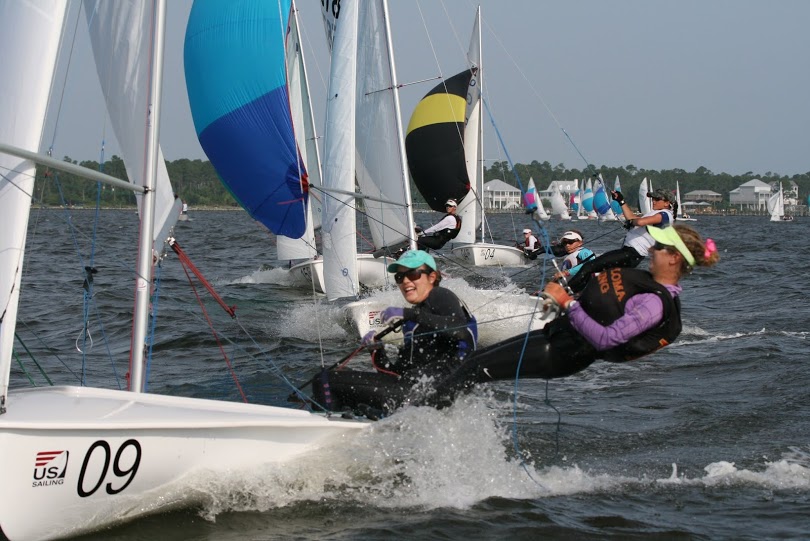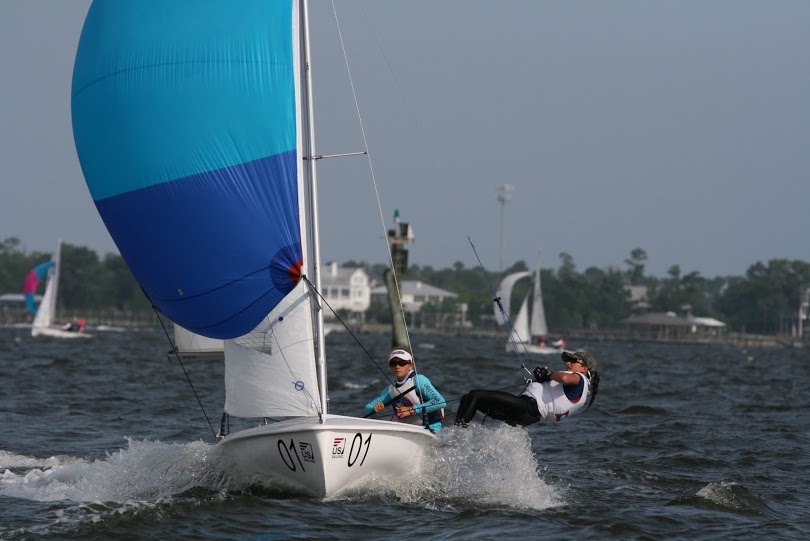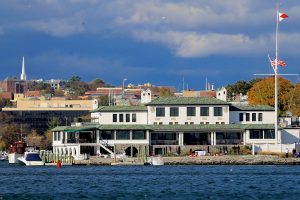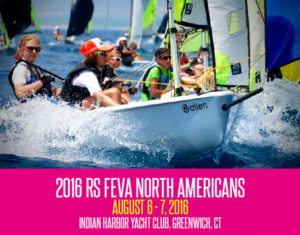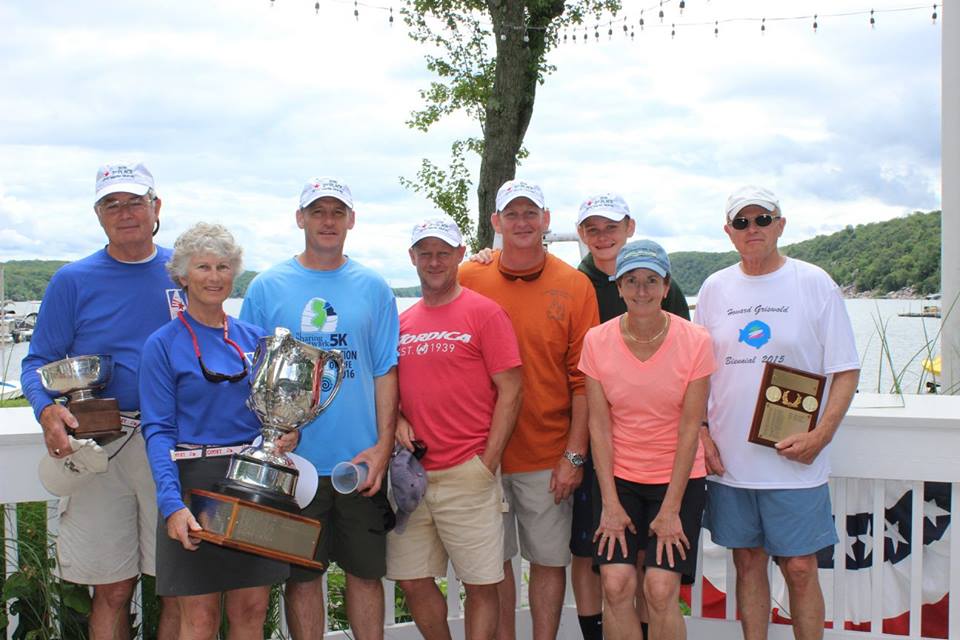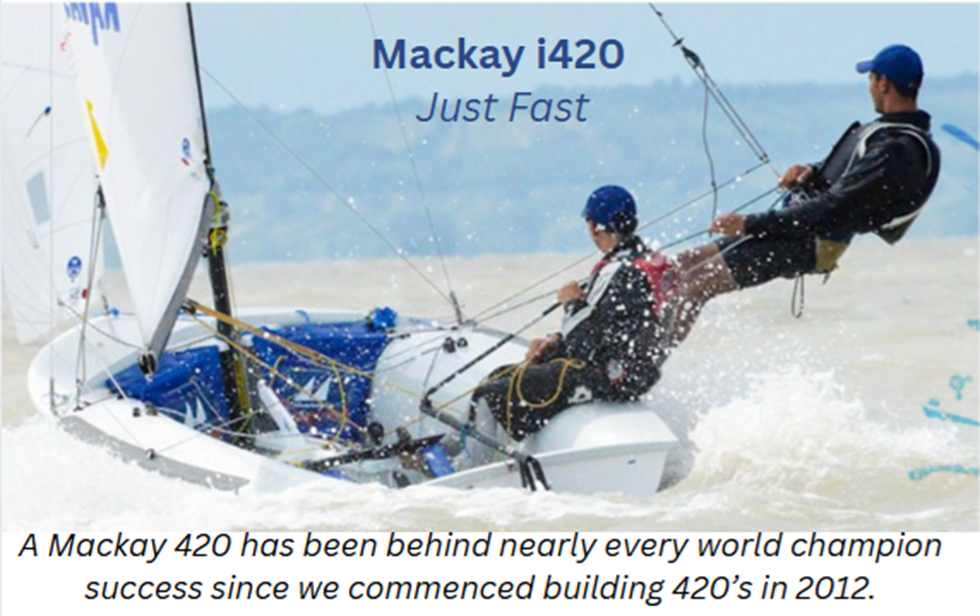By Joe Cooper
When I read that one of Newport’s local powerhouses in high school sailing, St.. Georges, had won the National Team Racing the Baker Trophy, it was an easy call to contact Roy Williams their head coach to check in.
S1D: Roy, congratulations on the win. Before we dig into that, give me a sketch of your background please.
RW: Thank you, the kids did a great job and the win was not clear until the finish of the last race. My background? Well I grew up sailing in Wales, in the UK sailing dinghies: International Cadet’s, 420’s, 505’s of all kinds small boats. This dinghy background is typical of most of the sailing clubs in the UK, very dinghy oriented and fewer ‘yachts’. I have been in the US for thirty years and have sailed on 110’s, 6 meters everything between and locally here in Newport. My educational background is as a civil engineer but somewhere in there I took a Post graduate Certificate of Education in the UK in Math teaching and outdoor education, and well here I am.
S1D: The Baker, held this year in Anacortes, Washington State had the extremes of weather, windy first day and then light and fluky for the second day. Did you have enough personnel to match weights for the different conditions?
RW: We had a full compliment of nine sailors. We used the same skippers and did use the heavier crews (some of whom were there as our alternate skippers) on the first day but I don’t think that in the FJ’s going too heavy is wise, they are lower freeboard and finer in the bows than the 420’s and if they are too heavy with crew, can get a lot of water in them especially in bad chop. I was really more focused on matching the skills of the crews.
S1D: Given that it was a National Championship, did you bring the big guns as it were?
RW: One of the skippers was Will Logue, current ISAF 420 US World Youth Champion but we also had one of the crews was a sophomore girl who has only been sailing since she came to St. Georges, so only two years of sailing, just at the end of her second year really.
S1D: You mentioned the regatta really went down to the last leg of the last race…?
RW: Yes, the sailing was 350 or so yards offshore and the angle for viewing was not ideal. In our race against Newport Harbor, they had a 1,2 at the bottom mark and so I did not know what was going to happen until the finish line. Our team managed to get back and win the race with a 2,3,5. In hindsight if they had won that race we would have been tied with them at 10-1 and they would have won the tiebreaker.
S1D: Do you have a formal structure for incoming freshman for joining the team?
RW: No, the only real criteria is if I think a new, non-sailor, is going to put him or herself or other team members at risk I might suggest they take a summer of formal sailing instruction first. We sail on Newport Harbor in the spring and the water is still cold. And for a non-sailor to get experience, it takes away from one of the skilled skippers who is in effect being a sailing instructor, at least for the first few hours so that needs to be weighed in the calculus.
S1D: Big picture philosophy, How do you conduct your sailing, what are you thinking of as you drive down to the boats?
RW: It depends on the part of the season, how far through it we are. In the beginning I concentrate on sailing fast and boat handling. Later on in the season, I concentrate on the finer details of execution. Especially in Team Racing, boat handling is so important so you really have to be good had handling the boat.
S1D: You mentioned earlier on a list of things that ‘win races’, what is that about?
RW: It an exercise we do almost every season. I get the sailors to write down a list of the factors that lead to winning races. This is all over the place as to who thinks what is important. So some of the newer sailors coming from say Opti’s, where there are big fleets, a good start can be almost the entire race. I write up on a white board all the suggestions. Then I draw a big circle that becomes a pie chart, and ask the sailors to allocate a percentage of each factor you can see what the elements are and how to rank them in importance. IT really gets the kids to think about what the different parts are in sailing and between fleet and team racing.
S1D: Are you seeing more girls entering sailing?
RW: I am seeing more girls coming as really good skippers. Sailing is one of the only sports I can think of where men and women compete as equals on the same field where there can be direct confrontation between them while competing. At the Women’s Championship (The Herreshoff Trophy) this year we had three qualifying regattas to get to 16 finalists. A few years ago we could only muster 10 schools with out qualifiers so in that sense yes, there are more girls in sailing, at least steering.
S1D: I noticed looking back through results that the same teams, especially from California are always in the hunt. Over a four-year cycle with high school and college sailing you can get fortunate and have good sailors all four years, but these schools have been in the top for 10 plus years. What is your take on this? More sailing time, sunny California?
RW: I don’t think it is more sailing time, we practice roughly the same amount of ‘formal’ total hours as the west coast teams, although they do sail far more fleet racing regattas than we do here on the East Coast. They do a lot more ‘messing about in boats’ sailing though. The really successful schools are in the sailing hub cities, Newport Beach and San Diego in particular. They are nearly all, if not all, Sabot sailors but early on they may spend time jumping in an out of other boats, such as FJs. This time in other boats, even though informal, certainly helps develop boat handling and boat speed. And again, early on, they do a lot of Sabot fleet racing, on courses that are a lot like the courses sailed at high school and college, so they are keyed up tactical situations. Good boat speed and boat handling, with solid tactics, makes for pretty skilled sailors.
S1D: Roy, thank you and again congratulations to you and the team
RW: My pleasure, thank you
Blog
The First Years as a Sailing Coach
By Northeast Airwaves writer Paige Hoffman

With over twelve hundred registered yacht clubs in the United States, and countless community boating programs, there is always a demand for sailing instructors. Consequently, many high school and college sailors, sailing students themselves, find jobs working in programs like these. I grew up sailing at Duxbury Bay Maritime School, and as a result found it easy to acquire a job there, having had connections with the Junior Sailing Program director through high school sailing. Getting the job was easy enough, but I soon realized that coaching is a lot more than simply being a competent sailor myself.
Like most junior instructors, I started off at age sixteen teaching classes as a sort of assistant to a more experienced instructor. This experience was invaluable to me as a person with really no prior teaching knowledge. I was able to learn the ropes of working with young sailors while making money and preparing myself for teaching more independently. Menial tasks, filling gas tanks, dropping marks, bailing boats, unpleasant as they seem, create hardworking and well-conditioned sailors. Being a junior instructor is sort of like being a freshman in high school or college. You’re expected to listen and work diligently, but also to make mistakes and learn from them. I can still remember the devastation I felt as a first year instructor when I fell out of a docked boat and lost a radio. It wasn’t a big deal in the grand scheme of things, but at the time, confessing to my boss was daunting. It helps to remember that even the oldest and most senior of sailing coaches were young once too, and that they too have broken equipment, lost equipment, and circumstantially made the same mistakes that young instructors are making now. If there is one thing to stress about being a junior instructor, it’s that you too are a student in this point in your teaching career. Listening to and watching how the older instructors teach and handle their students is a big part of your job too. Taking a backseat role and simply letting them take charge is not preparing you to be a competent teacher yourself. No matter how many times you have to fight for students attention, or tow them upwind when they can’t figure out how to get out of irons, the actions you take towards preparing your students as sailors will help you prepare you as a coach.

About Paige Hoffman, Northeast/High School Sailing Airwaves Reporter

ILCA Boat Grant Recipients win Lightning ACC's
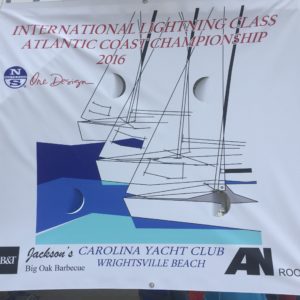
The event began with Greg Fisher (College of Charleston, Director of Sailing) and Brian Hayes (North Sails One Design) leading a clinic for the early arriving teams. These clinics, know to the class as Lightning Labs, are very intuitive seminars directed at performance in the Lightning. This session began with a short shore session where Greg and Brian talked about a few nuances of sail trim and fine tune controls in breezy conditions. After this quick shore session, 12 boats hit the water for some practice races with Greg and Brian coaching and videotaping. Conditions were perfect to knock out four good races and a few practice starts. The clinic wrapped up late in the afternoon with an hour long video debrief about sail trim and boat handling.
Racing began Saturday AM with a SW breeze and a 3-foot ocean swell. Three races were sailed with three different winners; Doug Wake, Ched Proctor & George Harrington. Other notables on the day were Greg Fisher, Peter Hogan and Eric Oetgen.
Sunday’s races began around 1130 after a quick postponement on the water. The breeze was light and from the SE with a very light ocean swell. Peter Hogan and Tommy Allen took the bullets in the two remaining races. Other notables were Gordon Wolcott (Boat Grant Recipient), Carter Cameron and Bill Mauk.
The real story behind this event is the overall winner with 5, 3, 10, 2 & 6 for finishes. Gordon Wolcott from Virginia Beach with his crew Elizabeth “Lizzie” Chambers from Mooresville, NC and Chris Stessing from Buffalo, NY sailed to very consistent finishes throughout the event to take tie with Greg Fisher (with his wife JoAnn and daughter Martha) and win the tiebreaker. This team is one of the 2016 Boat Grant Teams*. This is only the 2nd event that they have sailed in a Lightning and the first major event in the class. This win certainly sends a statement that our Boat Grant Program* is working and we are finding great sailors. Congratulations to Gordon, Lizzie and Chris on the win!
*To learn more about the International Lightning Class Boat Grant Program, you can visit our class page or see this Scuttlebutt article from May 16, 2016.
Overall Results
Interview with the Winners
Ida Lewis: the Stories Behind the Podium
By Airwaves writer Sammy Pickell
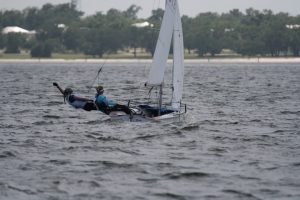
teams to qualify for the Youth Championships held in August. For others, placing at Ida Lewis would serve as the pinnacle of their sailing careers thus far. Ida presented every team with an equal opportunity to showcase everything they have learned about sailing a club 420.
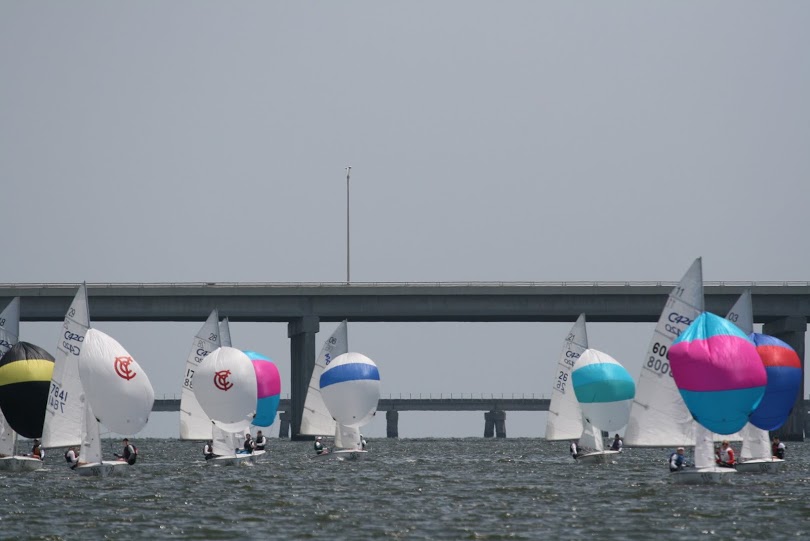
hydration in the humid environment. Sailors also met their generous host families for the week and settled in at host homes of Bay St. Louis locals, another crucial aspect to building up peak performance. Emma Batcher from San Diego, California called a large summer house with 17 other girls her home for the week. “The host family’s importance can’t be overstated,” said Emma. “We are all able to do our best in an unfamiliar place thanks to the hospitality of our families.”
Emma Batcher’s host family may have held the key to her success. She and her skipper
Amanda Majernik narrowly made the podium, securing a fifth place after some strong finishes
throughout the week. Even more impressive, her skipper’s journey to Ida Lewis started off in the
front of the boat, as Amanda crewed at the 2015 Ida Lewis and only began her debut as a skipper
that same summer as well. Amanda and third place skipper Tanner Chapko, also from San Diego,
share similar stories. Tanner began her experience with double-handed boats as a strong crew,
working for years to master her trapping skills and jib trim. However, she soon learned she was a
force to be reckoned with in the back of the boat as well. Tanner and her crew Megan Lansdale
made success imminent as well as enjoyable with their many laughs during the week and mutual
understanding of each other as crews.
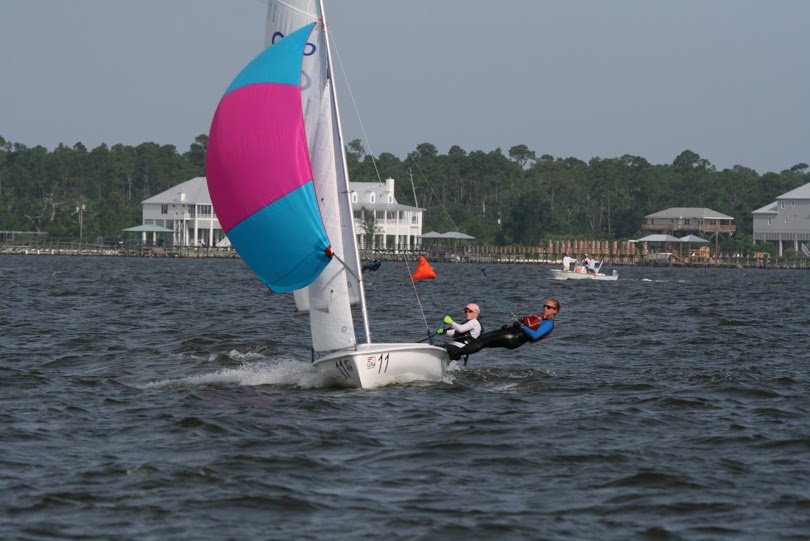
time veterans to the Ida Lewis regatta Aitana and Lorea Mendiguren. Their journey together
began long before their sailing partnership did, as twins sailing against each other since they
were young. The twins began their Ida Lewis journeys barely old enough to compete and now
finished up their experience during their last summer sailing together before college. Reaching
this spot on the podium has been a long and memorable journey for them both. “I’ll miss my
sister and it’ll be difficult because I have come to understand what she needs from a crew, so the
transition will be tough,” says Lorea. “But I’m always up for a new challenge and love meeting
people who love sailing as much as I do.” Lorea and Aitana will part ways for the first time in
fall— Lorea to the University of Southern California and Aitana across the country to the George
Washington University. The twins will also part ways as teammates after five years of Ida.
Contrary to Lorea and Aitana’s long involvement in the championships, both the winning
team and the runner up are relatively new to the club 420 and are first time Ida Lewis
competitors. The winners of the entire regatta, Sarah Burn and Patricia Gerli, grew up in New
Jersey dominating the Optimist fleet; each immediately transferred this power into Ida Lewis—
one of their first club 420 regattas. Similarly, in the case of the second place team including
skipper Michelle Lahrkamp and Gabrielle Delbello, Michelle only finished up sailing optimists
last summer. Both sets of girls are only incoming sophomores, giving them plenty of time to
keep building on their already huge accomplishments from the week.
The podiums at national sailing events present much more than skillful sailors able to tactically overcome competition out on the race course. Behind each team called up to receive their trophy, separate stories of preparation make the end result incredibly special after so much time and effort spent training for the event. Each Ida Lewis clearly differs from the next, but the level of talent exhibited by young women on the water is a factor that surely won’t change as long as the regatta is around.
Get Ready for the 2016 RS Feva North American Championship!
Over the weekend of August 6th and 7th, Indian Harbor Yacht Club Connecticut, will be hosting the 2016 RS Feva North American Championships.
The RS Feva Class is sailed and loved all over the world, popular with junior racing enthusiasts, training programs and sailing schools. It currently has a booming international race circuit, with the World Championships in Santander, Spain, this year seeing over 160 boats entered and competitors from as far afield as New Zealand to coming to compete!
The RS Feva Class is probably one of the friendliest and fun, as well as providing young sailors with competitive racing across all levels of ability. This summer, the RS North Americans is really not one to be missed. Come and experience the buzz for yourself.
Located on Long Island Sound in Greenwich, Connecticut, Indian Harbor Yacht Club has a rich sailing tradition going back over 125 years. IHYC is experienced in hosting top level events and is proud to be hosting the inaugural RS Feva Class this year! The club will be putting on racing on Saturday and Sunday and a great socialising opportunity in the form of a BBQ on Saturday night!
Entry costs $125 for the weekend and charter boats are available from Zim Sailing [email protected].
For information about the RS Feva Class and events go to rsfeva.org and for details about the boat go to RSsailing.com
For further information, please contact:
RS Sailing North America – Todd Riccardi
Martin Murray Comet Regatta Report & Results
The Martin Murray Comet regatta was well attended by 18 Comets. There were several new faces, Steve McMillan from Lake Hopatcong, John DiLella Green Pond sailing instructor, Michael Tolsma from Green Pond, and Peter Goodman from North Jersey. The Comet Class Association is alive and well!
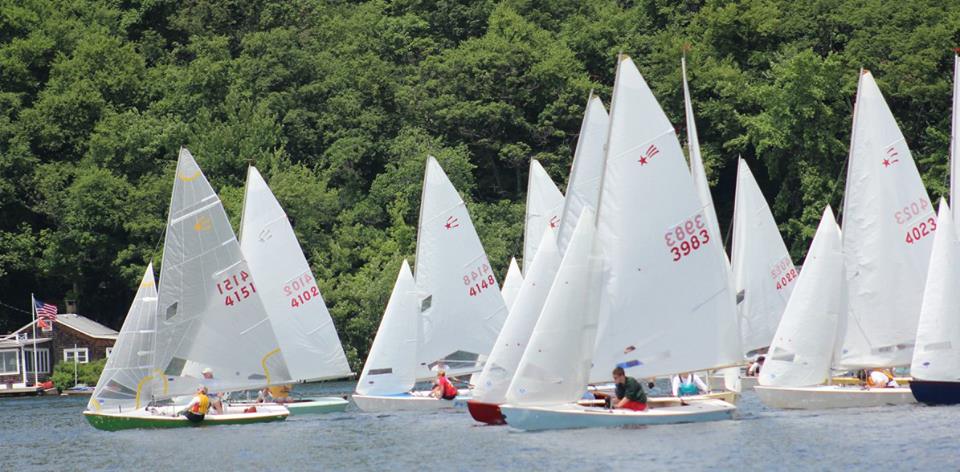
Once the fog cleared Saturday morning four races were held that day and three more on Sunday. The hard luck prize goes to Mark Buruchian who was winning the last race when his mast step gave way and the rig slowly fell into the pond.
Always a joy to sail on a fresh water lake and to be able to cool off between races.
Thanks to Kathy Watson and Richard LaBossiere for running another great regatta.
Remember that Whitecap Composites produces new Comets, right here in the USA. Check our their website and learn more about this great class, and their new boats!
1st 4151 Talbott & Lee Ingram. 1,1,2,1,2,3,(5) = 10 pts (sailing a Whitecap Comet!)
2nd 3418 Peter & John Schell. (7),5,4,5,1,1,1 = 17 pts
3rd 4102 Rob & Drew Schell. 2,(9),7,3,5,2,2 = 21 pts
4th 4086 Bob Griswold & Kristen Dawson. 3,3,5,4,4,(10),10 = 29 pts
5th 4088 Kevin & Ashley Buruchian. 6,(10),3,6,7,5,3 = 30 pts
6th 4148 Wick Dudley & Tina Lauver. 5,2,6,8,6,(12),4 = 31 pts
7th 3468 Brad Meade & Caitlin Goodman (15),4,11,14,3,4,6 = 42 pts
8th 4137 Joe & Ian Lauver 4,(14),10,2,9,14,7 = 46 pts
9th 3983 Mark Buruchian & Greg Gilbert 13,11,1,7,14,8,(DNF) = 54 pts
10th 4077 Reed Valliant & Ridgely Kelly (16),7,12,12,10,6,8 = 55 pts
11th 4093 Ralph & Matt Grossmann 10,8,8,9,(15),15,10 = 60 pts (tie break)
12th 4130 Rick & Sarah Sloan 11,(13),9,11,11,9,9 = 60 pts (tie break)
13th 4022 John & Paul DiLella 9,6,13,13,8,(13),13 = 62 pts
14th 4084 Steve McMillan & James Byrne 8,(15),15,10,13,7,11 = 64 pts
15th 4023 Michael Tolsma & Ron Damiano (17),16,16,15,16,11,14 = 88 pts
16th 3938 Ellen Bakalian & Charlotte Smith 12,12,14,(DNF), DNS,DNS,DNS,= 95
17th 4030 Peter Goodman & John Gaidimas (18),18,17,16,17,16,15 = 99 pts
18th 3382 Keith Callahan and Brayden Huston 14,17,(DNS),DNS,12,DNS,DNS=100

